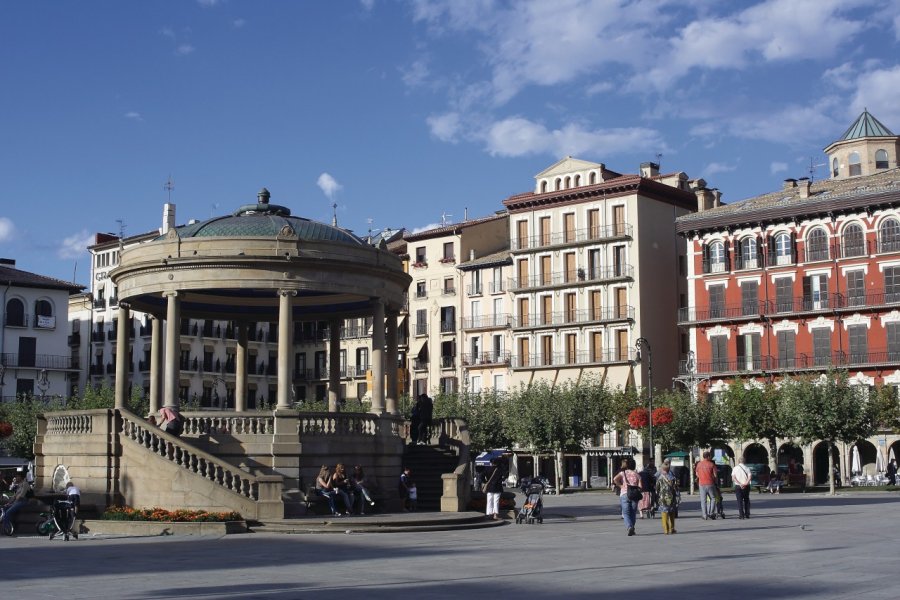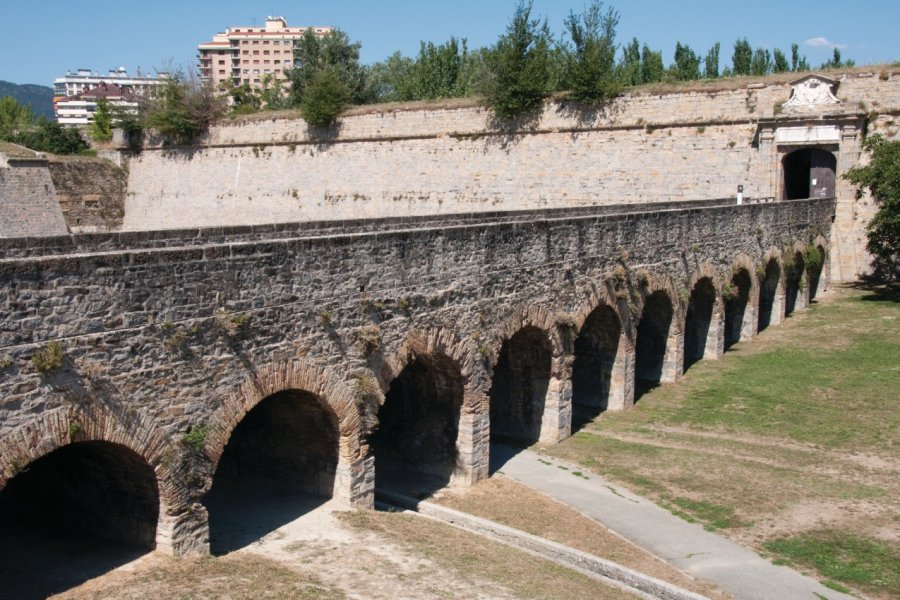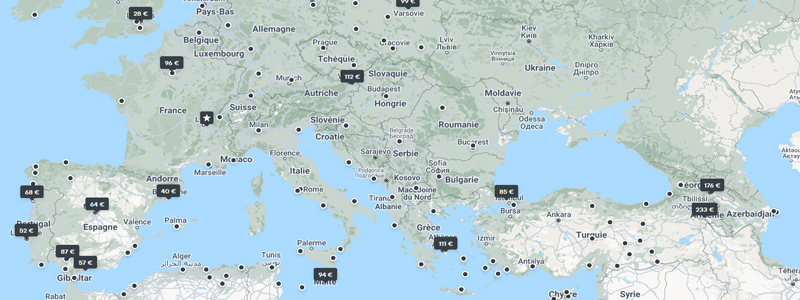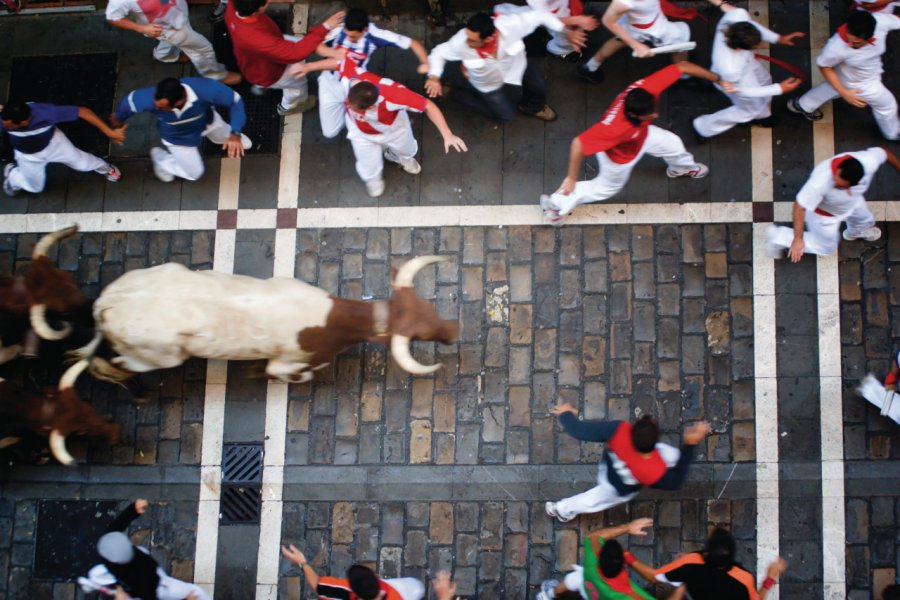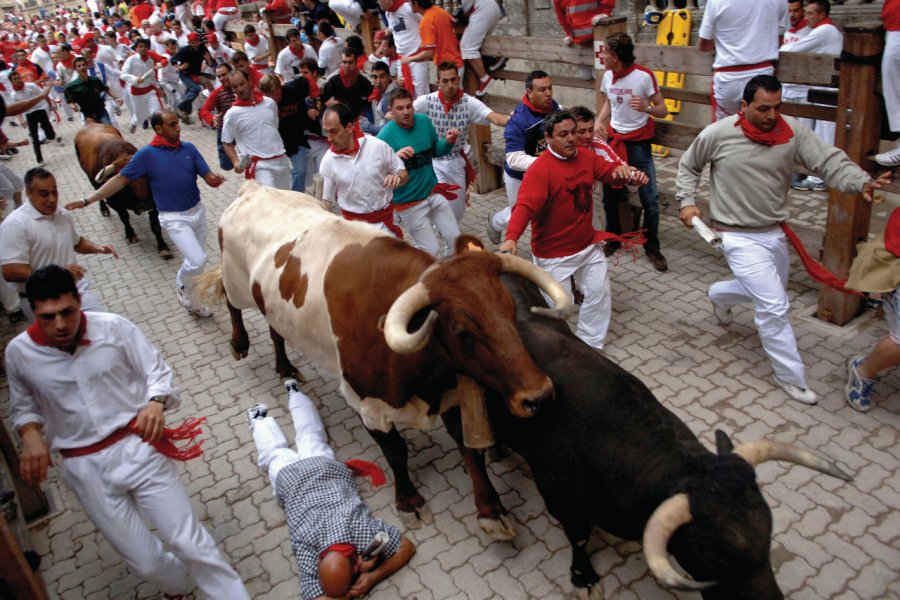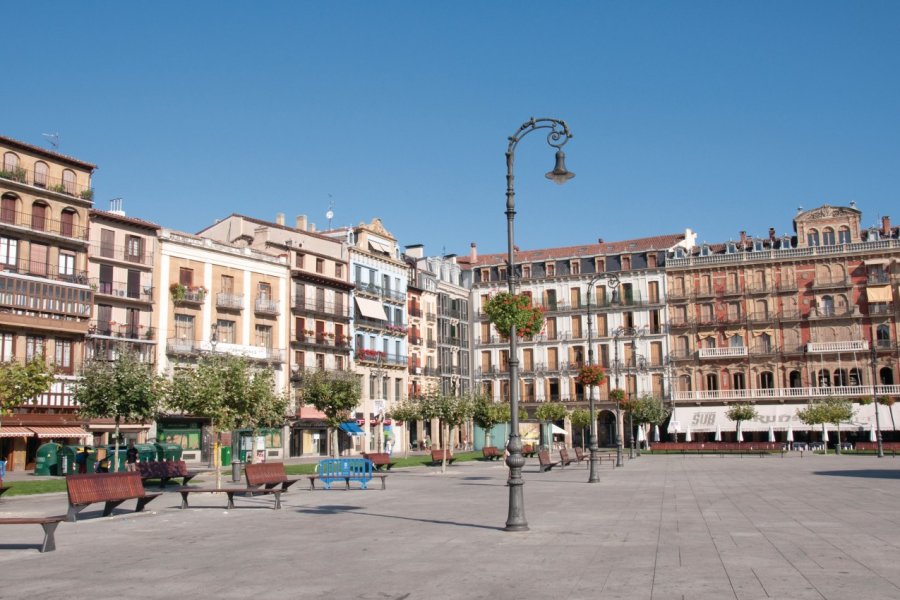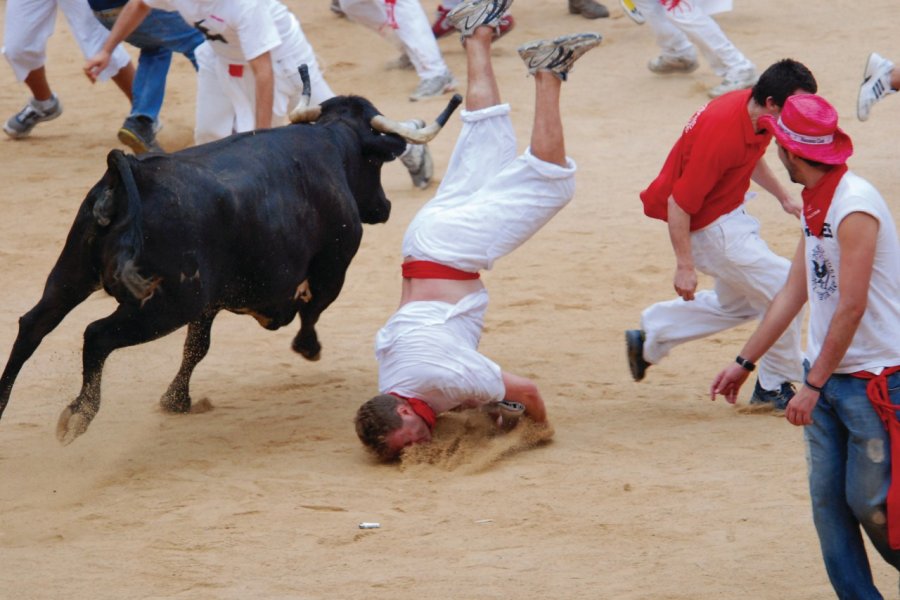Travel Guide Pamplona
What to visit Pamplona?
When to go to Pamplona?
When to go to Pamplona? Spain is one of the destinations that can be visited all year round, and Pamplona in particular is an urban destination. The city's peak tourist season is during the San Firmin festival, which takes place in the second week of July. The high tourist season lasts throughout the summer. The climate is very pleasant from May to October. High season rates are also applied during Holy Week (Palm Sunday to Easter Sunday) and during public holidays. It is therefore advisable to book your rental car and accommodation well in advance to avoid unpleasant surprises. The low season corresponds to the slow months in Spain, generally from the end of October to the end of March. The mid-season includes the months of May, June, September and October. Prices are moderate and the weather is always mild.
Weather at the moment
Pamplona is located at the junction of the Mediterranean and oceanic climates and has an average annual temperature value of 12.5°C with an average in summer of around 20°C and in January of 5/6°C. The sun shines almost half the year. The general climate is slightly continental and moderately rainy.
Spain being in the euro zone, there is no need to plan exchange rates. From a global point of view, in Spain, life is cheaper than in France. However, hotel prices are more expensive in summer and during the holidays. Blue cards are accepted in most establishments. Pamplona is not a luxury destination, but life is still much more expensive there than in a village in the hinterland!
Spain and therefore Pamplona are part of the Schengen area, so you do not need a visa. An identity card or passport is sufficient to cross the border. However, be careful with the entry requirements for your pets if you wish to bring them with you. Find out before you leave to find out how they can help you.
You don't risk any health problems by going to Spain, so in Pamplona, the health conditions are the same as in France. However, check if your vaccinations are up to date, this could avoid surprises once you are there. In summer, bring a cap, sunglasses, sun cream and plenty of water. In winter, umbrella and warm clothes.
Practical information
- When to travel?
- Weather forecast
- Budget
- Formalities
- Health
- How to travel by yourself?
- How to get organized?
- Getting around
Media
How to go to Pamplona? Our advice & tips
Spain being a very popular destination for the French, many tourist tours are available. The territory being immense, we will most often favour a thematic approach: hiking tour, seaside tour, mill tour or mountain bike tour. To visit a region, allow a minimum of 15 days. City trips can also be planned over three to five days in major cities and particularly in Pamplona, the ideal base camp for visiting Navarre.
Discover our selection of travel agencies for this destinationIt is very easy to go alone to Spain and especially to Pamplona, as the road, rail and air transport networks are very developed. In addition, the Spaniards are welcoming and have an easy conversation and the country enjoys a similar level of security as France. However, beware of pickpockets in tourist areas and large cities, especially Barcelona and Madrid, less so in Pamplona. Remember to book well in advance during the summer or during the holidays.
To visit Spanish cities, take advantage of a quality and cheap public transport network. On the train side, the frequency and punctuality of arrivals vary. On the bus side, Spain is better meshed than France. Several companies compete for the sky with promotions and discounts, including Vueling and Iberia. To get around Pamplona, public transport or taxis are efficient.
Pamplona travel inspiration
Find unique Stay Offers with our Partners
Pictures and images Pamplona
Discover Pamplona
When to go to Pamplona? Spain is one of the destinations that can be visited all year round, and Pamplona in particul...
Read more about it
Pamplona is located at the junction of the Mediterranean and oceanic climates and has an average annual temperature v...
Read more about it
Spain being in the euro zone, there is no need to plan exchange rates. From a global point of view, in Spain, life is...
Read more about it
Spain and therefore Pamplona are part of the Schengen area, so you do not need a visa. An identity card or passport i...
Read more about it
You don't risk any health problems by going to Spain, so in Pamplona, the health conditions are the same as in France...
Read more about it
It is very easy to go alone to Spain and especially to Pamplona, as the road, rail and air transport networks are ver...
Read more about it
Spain being a very popular destination for the French, many tourist tours are available. The territory being immense,...
Read more about it
To visit Spanish cities, take advantage of a quality and cheap public transport network. On the train side, the frequ...
Read more about it

